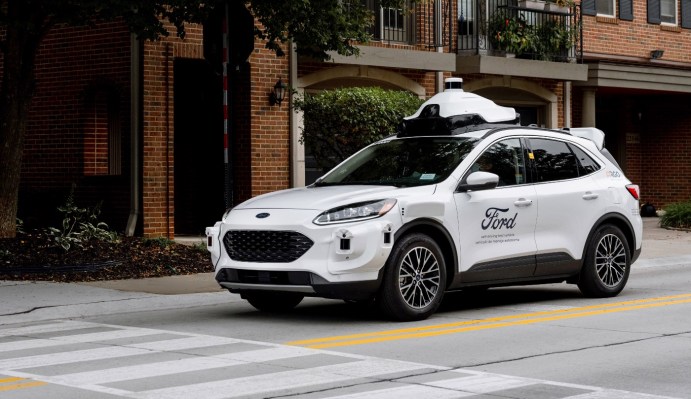Ford and autonomous vehicle technology company Argo AI have been partnering for years to bring high level self-driving capabilities to Ford vehicles. To date, much of that partnership has been realized through testing robotaxi services and, more recently, piloting last mile delivery. Now, it looks like Ford is interested in expanding that partnership to focus on middle mile deliveries.
“We’re getting more and more interested as a company, maybe a bit of a strategic shift, on goods movement,” said Jim Farley, Ford’s CEO, during Wednesday’s Q1 2022 earnings call. “It’s aligned with our commercial vehicle business and our customers feel they’re getting more and more interested in middle mile, specifically.”
Farley also noted that Ford is interested in continuing to align strategically with partners that can bring Argo use cases to life using Ford’s vehicles. Argo and Ford are working with Lyft to launch self-driving vehicles on its ride-hailing platform in Miami and Austin, and the two companies are also conducting a grocery delivery pilot program with Walmart in the same cities, with plans to expand to Washington, D.C. later this year, according to an Argo spokesperson.
Part of the automaker’s Ford+ plan for growth involves using disruptive technology, like its FORDLiive connected-uptime system that helps with fleet management, to advance its commercial offerings. When Ford launched Ford Pro, the automaker’s global vehicle services and distribution business, a year ago, the company said it anticipated the unit to generate $45 billion in revenue from hardware and adjacent and new services by 2025. Could middle mile autonomy be the next product Ford offers to commercial customers?
One thing is for sure. Ford is not interested in using Argo’s tech to help it further its own advanced driver-assistance system, BlueCruise.
“We really see, maybe different than others, Level 2 or Level 3 and Level 4, as two distinct products,” said Farley. “Yes, Argo could help us with our semi-autonomous capability. But we feel like that would be a big distraction for them, and we do not want them distracted at all.”
Revenues and costs for autonomous development fall under a separate Mobility line in Ford’s balance sheet, which used to include micromobility company Spin and public transit software and planning company Transloc, which were sold off in March to Tier and Modaxo, respectively.
Year over year, losses in Mobility were flat, with fewer losses quarter over quarter. In Q1 2022, Ford reported mobility losses of $242 million, which is down from Q4 2021’s losses of $342 million, possibly due to Ford’s divested interests in the two businesses mentioned above. Revenue in the first quarter increased compared to the same quarter last year at $84 million compared to $11 million in 2021.
Whereas Ford is funding its forays into electrification largely through internal combustion engine vehicle sales, Farley reiterated that the automaker is open to receiving outside funding for autonomous initiatives. This could be a signal that Ford’s “strategic shift” into middle mile is not a pivot away from ongoing autonomous pursuits, but rather an addition.
